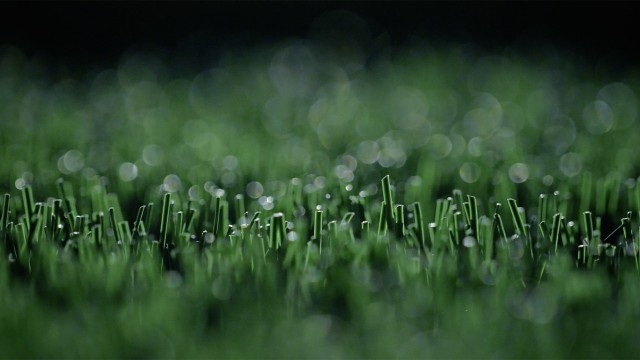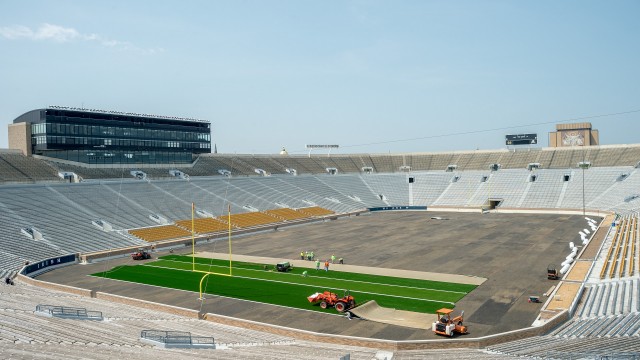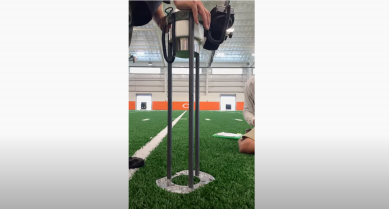After their life expectancy of 8-10 years, artificial turf fields do require to be replaced to ensure proper performance and safety. Harrison High School in Colorado Springs is still currently playing on their 14 year old FieldTurf field.
How do you know when your artificial turf field is ready to be replaced? Your field will show clear signs that it’s time for a new surface.
If you would like help to properly analyze your surface, our leading FieldCare team can help evaluate your field, build a proper maintenance program and create a replacement plan for your program to get the most out of your field. Book Here.
On-Site Field Evaluation
The best way to evaluate your field is to do an on-site inspection. You want to pay close attention to:
- Seams, Lines & Logos: Over time, the glue or stitching that hold the turf rolls together can lose its strength properties. You’ll notice the panels trying to pull away from each other. Examine numbers, lines, hash marks and logos for similar occurrences.
Appearance of a Matted Surface: Natural UV exposure over years from the sun is a key contributor to the aging of artificial turf. Once the UV stabilizers are consumed, you can expect to see a loss of properties in the fibers and infill, including mechanical performance and color. The appearance of a heavily matted down surface could be a key indicator of inadequate maintenance or that the field is due to be replaced.
Poor Drainage: If after heavy or moderate rainfall, you notice ponding or slow drainage, it could indicate an issue with the subbase which would need to be corrected when replacing the surface.
- Infill Compaction: Like soil, over time the infill will naturally compact. If not regularly maintained, it can lead to the surface becoming excessively hard and cause potential harm to athletes. When you walk the field, if you feel areas of the surface that are abnormally hard, performing a surface hardness test is recommended.
- Infill Measurements: Over years of use, some of the infill will naturally migrate off of the field. Heavy rainfall, events, maintenance sessions and even athletes can contribute to infill migration. This may lead to dangerously low infill levels. If your infill depth (bottom of the surface to the top of the infill) falls under 20mm, adding infill across the surface may be necessary. The cost of adding infill vs replacing the entire surfacing should be considered closely.
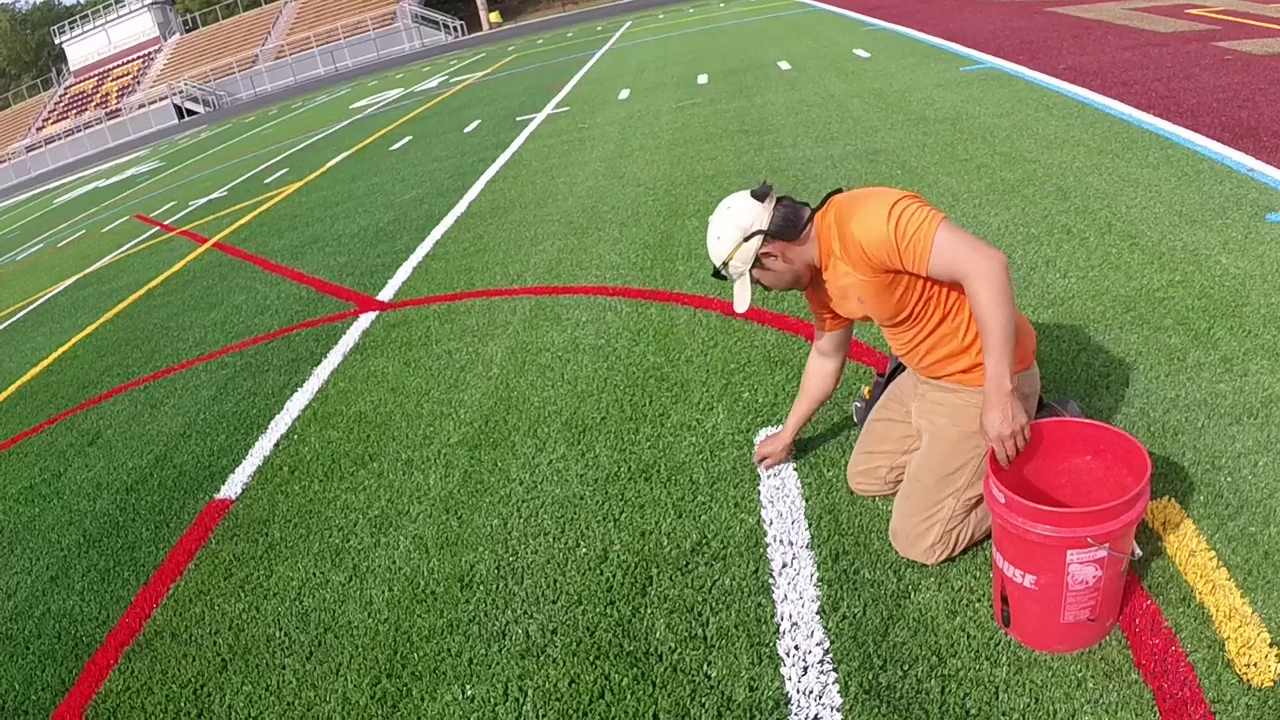
Test The Surface Hardness
The safety of your student athletes should and always be your first priority. An important annual test to run on older fields is a surface hardness test, or often referred to as a GMAX test. Surface hardness is measured by dropping a weight – often called a missile – from a fixed height onto the playing surface. The missile contains an accelerometer that measures deceleration, in other words, how fast the missile stops once it hits the surface.
A numerical value (most commonly referred to as GMAX) is then generated. A high GMAX value indicates the missile stopped quickly. Think of this as dropping the missile onto concrete. If the missile was dropped onto a pillow, it would take a longer time for the missile to stop and the softer surface would produce a lower GMAX value.
According to the ASTM 1936-10 standard, the maximum “Performance Requirements” is that the average GMAX at each test point shall be less than 200 g’s. If any point on the field is over 200 g’s, it should be remediated. If after remediation, the area still records over 200 g’s, the surface would require closer attention or replacement.
Replacement Options
If your field is ready for replacement, there is good news. In the majority of cases, the subbase will still be in excellent condition resulting in only the turf needing to be replaced. The investment will be significantly less than the initial installation.
Also, a lot has changed since your last field was installed. Artificial turf field replacement has evolved considerably in recent years. Here are some of the latest methods and systems to consider when resurfacing your facility:
- Infill Recycling: The fibers and carpet might appear worn, but the infill still has tremendous shock properties. It can be cleaned and reused in the new field. The process is good for the environment and helps reduce replacement costs.
- FieldTurf Re-Cover System: Instead of removing and disposing the aged field, Re-Cover, a patent-pending process, installs a new field on top of the existing surface. The process repurposes the existing field to help provide added safety and performance to the new field. Re-Cover can help save up to $150,000 compared to a standard removal & replacement with an underlayment system. Learn more Here.
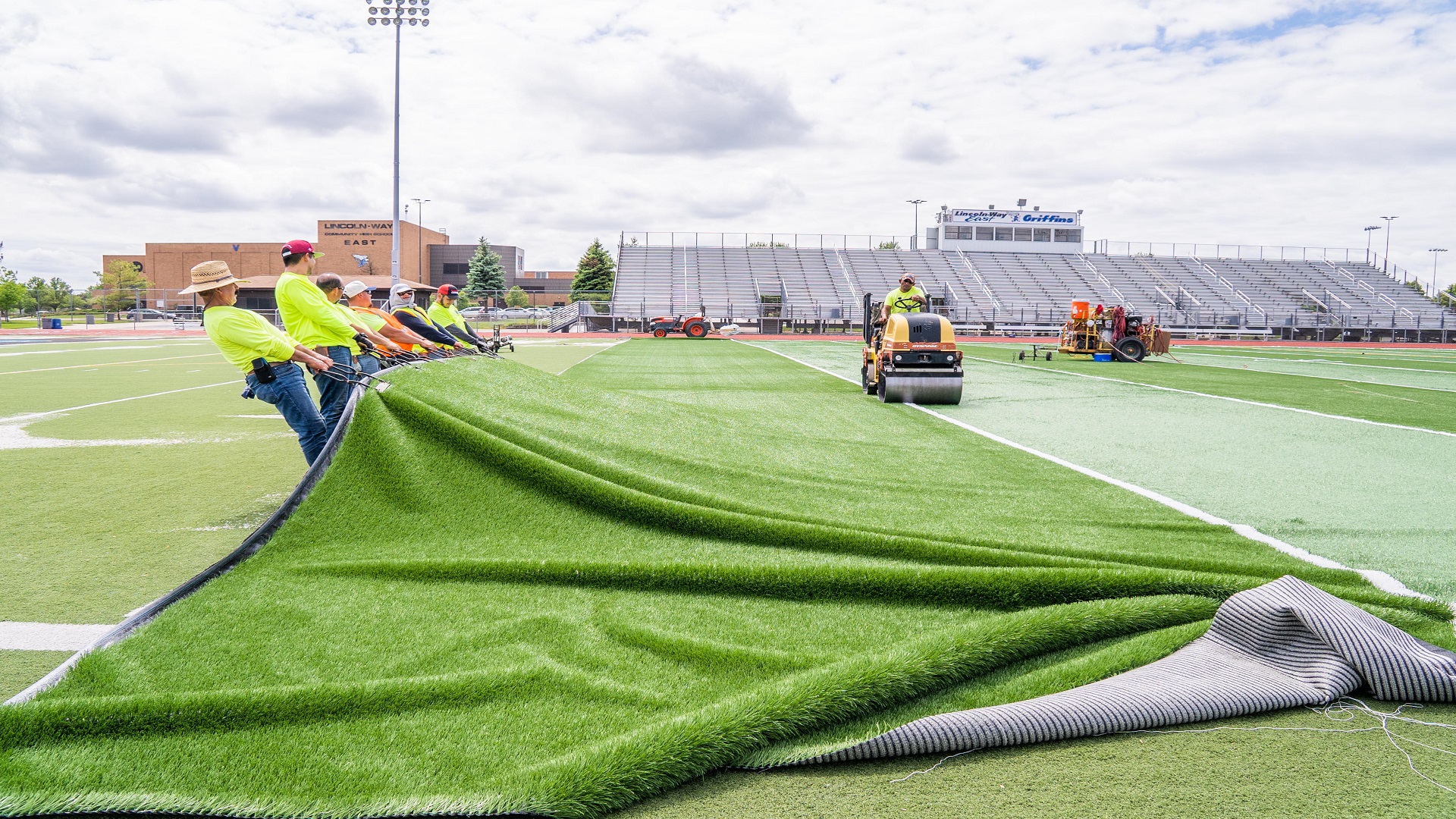
- Adding Smart Field Technology: It’s no secret that a key factor of field durability is proper maintenance. Genius, the first smart sports field, helps optimize your field maintenance. The system automatically tracks the number of athletes playing, hours of use, and send maintenance alerts when needed. Genius deliver in-depth reporting on executed maintenance and usage, allowing you to optimize scheduling, utilization and care. When replacing your surface, add Genius to your facility for a full overhaul. Learn more Here.
Our FieldTurf experts are here and ready to help you plan your upcoming field replacement. Find your expert Here.

